Invisible Hand
The burgeoning of two Columbia churches
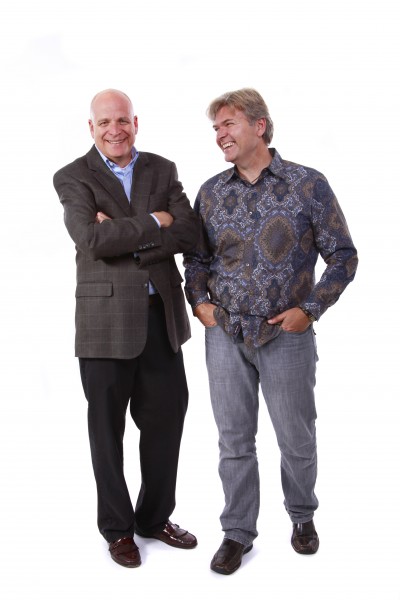
IT’S A SULTRY SUMMER DAY, and attendants in orange safety vests usher a procession of cars into the parking lot outside The Crossing. If not for the occasional pressed shirt and patent-leather shoes, you’d think this was a concert or sporting event. But it’s Sunday morning, and these people are going to church.
A couple miles down the road, a similar scene unfolds at Woodcrest Chapel. Hundreds of worshippers stream into a spacious building containing several wings and a courtyard. Thanks to the magic of simulcasting, hundreds more tune in from a Jefferson City campus at Capital Mall.
Over the past decade or two, attendance at these churches has soared. Woodcrest Chapel grew from a handful of people in 1987 to 2,200 to 2,500 today, with up to 4,700 attending on Easter. The Crossing, which opened in 2000 with 30 members, now hosts 3,500 on a busy Sunday.
Behind the growth
Woodcrest Chapel’s annual budget is $2.69 million. Contributions come from about 1,400 giving units, which breaks down to about $37 a week per family. The Crossing’s budget is $4.5 million for 2012, and like most churches, roughly 30 percent of members and attendees donate 70 percent of the funds. The average annual contribution is about $2,000 per member and $600 per nonmember.
“It’s a budget that reflects the deep generosity of our church community,” says Dave Cover, one of three co-pastors at The Crossing. “It enables us to love and serve our city. It enables us to have the kind of children’s ministry, junior high and high school ministry, college ministry, the kind of ministries to the poor and various aspects of our community that are making a difference in peoples lives.”
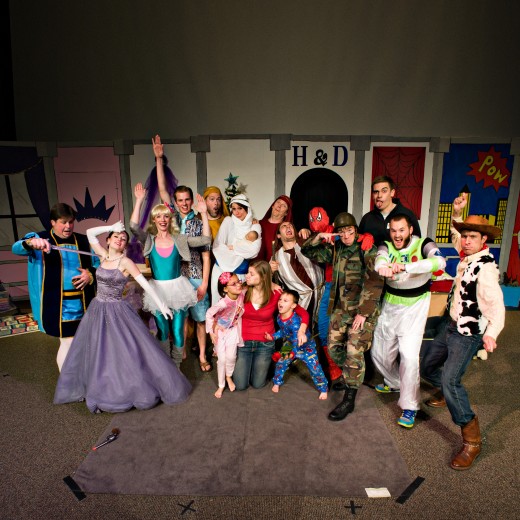
Roughly 11 percent of The Crossing’s budget goes to The Crossing’s missions. Half of its budget is spent on its part- and full-time personnel; at Woodcrest, it’s 63 percent.
“Many church leaders are skittish around budgets and counting people in the seats or cars in the parking lot,” says Woodcrest pastor Pieter Van Waarde. “But I believe that part of a leader’s organizational responsibility, even if the organization happens to be a church, is to make sure that we are good stewards of our resources.”
Prior to pursuing his theological education, Van Waarde earned an M.B.A. From his business training, he learned the importance of good planning, careful budgeting and strategic thinking. “Churches that refuse to engage in these practices will invariably lose congregational trust, which is the foundation for any kind of sustainable spiritual authority,” he says.
To ensure financial integrity, Woodcrest and The Crossing both participate in external audits each year. For salaries, both churches’ largest expense, each has its own system of fairness. Woodcrest completes a compensation survey each year, conducted by the National Association of Business Administration, to determine appropriate salaries and benefits for full-time employees. Salaries for employees of The Crossing are determined by the church’s elders, including seven church members, three pastors and the director of operations.
In addition to their big budgets, these two churches also have impressive congregations. Protestant congregations that draw 2,000 or more are often referred to as megachurches. According to a 2012 report by Scott Thumma and Warren Bird of the Hartford Institute for Religion Research, there are about 1,600 such churches in the United States today, 30 of which are in Missouri. Nationally, the number of megachurches is up nearly 25 percent from 2005.
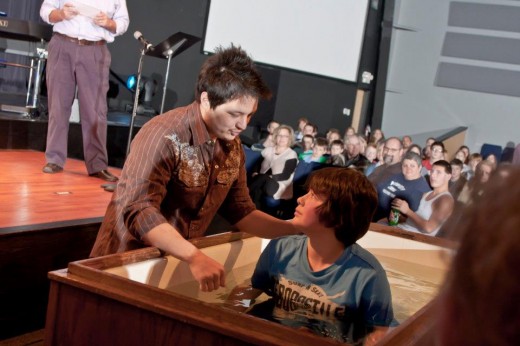
“Sometimes growth happens for reasons we don’t realize at the time,” Cover says. “Obviously from our perspective, it’s something we think God has chosen to do.”
Beth Bramstedt, associate pastor at Woodcrest Chapel, cites God’s hand as well. She also recognizes the importance of things such as leadership, longevity of staff and intentionality of purpose. She adds that being relatively new makes it easier to communicate their message in a modern way.
“What we and The Crossing have in common, which is unusual for many churches, is that we engage people by providing a culturally relevant environment,” Bramstedt says. The steeples and stained glass have been replaced with coffee bars, bookstores and sunny meeting spaces. It’s an environment that suggests abundance and choice.
“When people come through our door, they don’t feel like they’ve gone back in time,” Cover says. “We don’t hold on to traditions from older cultures that have no spiritual relevance.”
Heather Rice, a pharmaceutical representative with a master’s degree in religious studies from the University of Missouri, put it this way in a recent email: “As a visitor to a service at The Crossing, I felt a mix of old-school revival and very modern Christian music and technology. The passion and charisma draw you in and make you feel very welcome and excited; yet unobtrusively, the service is very organized and structured. Add to that a before and after feeling of mingling in a coffee house with friends and family…but talking about God.”
Connecting to culture
Connecting with the current culture is one of three things that draws people to churches such as Woodcrest Chapel and The Crossing, says John Wigger, professor of history at MU and member of The Crossing. He says they also communicate a message that resonates with people’s deep spiritual longings, and they’re very good at organization.
“I marvel at just how good they are,” he says. “Organization goes hand in hand with the program.” Wigger, whose research is in American religious and cultural history and is writing a book about The PTL club and the TV empire of Jim and Tammy Faye Bakker, says the burgeoning of megachurches is hardly a new phenomenon.
“It looks like many religious movements that have attracted large numbers of people throughout American history,” he says. “What they’re doing is new in this particular setting, but the concept is not particularly new.”
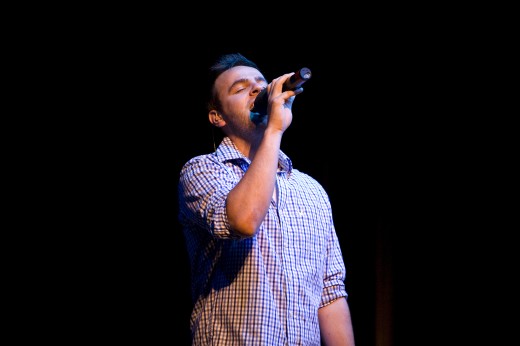
He says religious movements have always used what was cutting edge in their culture at the time. For example, the American Methodist church grew from a few members in 1776 to one-third of all churchgoers by the time of the Civil War. The Methodists established many colleges and universities and were the first to allow African Americans to lead congregations. However, like many mainline churches, their membership has been declining nationally since about the 1960s.
“American religion has that flexibility,” Wigger says. “People find the cultural point they’re looking for in their church. It’s a matter of choice. Separation of church and state has lead to unlimited flexibility and a variety of religious choices in this country.”
Competition and choice, the same forces that drive the success of market capitalism, are at work as well, according to a book by two editors of The Economist magazine titled God Is Back: How the Global Revival of Faith is Changing the World.
“The very things that were supposed to destroy religion — democracy and markets, technology and reason — are combining to make it stronger,” write authors John Micklethwait and Adrian Wooldridge. They suggest that religion blooms when it’s a matter of a choice rather than something that’s inherited or forced.
Appealing to that choice is at the heart of evangelism, an important mission for both Woodcrest Chapel and The Crossing. Like all successful enterprises, they’re able to identify their target audience.
“We have a specific person in mind we’re trying to reach,” Bramstedt says. “They’re the unchurched with no experience or the dechurched who have had negative experiences. They’re skeptical, yet their life solutions are not working for them.”
Bramstedt calls them seekers and says they make up about 30 to 35 percent of Woodcrest Chapel’s congregation. Another third of the congregation is the group of core leaders who believe in the mission to reach the first group. The final third are in between and more casually involved.
“We do not try to recruit people from other churches,” she says. “That’s not our audience. If you’ve had a good church experience, you would not like our church. Our mission is to help people who don’t feel that they belong in a traditional church.”
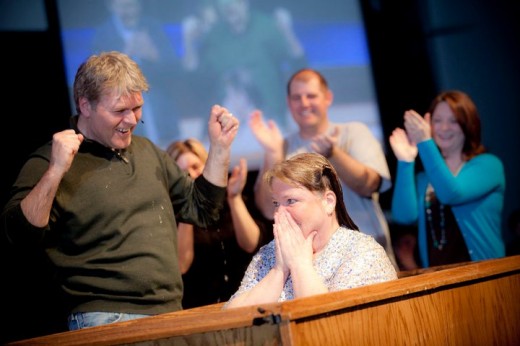
Message and reach
Kyle Shern grew up attending a small rural church north of Columbia and says nothing really hit home to him there. In 1994, after some looking around, he began attending Woodcrest Chapel.
“Woodcrest was radically different,” he says, acknowledging that initially he wasn’t quite sure what drew him in except that he liked Van Waarde’s preaching style. “In my opinion, Christian Lite can’t be further from the truth. Woodcrest really reflects what Christ is about. Jesus lived among the people — not from above.”
Bill Short, another member of Woodcrest Chapel, volunteers there as a guitarist for the creative arts team. He says a pipe organ would have caused him to get up and leave, but the contemporary music and visual environment drew him in.
“You walk in, and you’re treated like a human being,” he says. “I think maybe people are afraid to go to church because they think they’ll be looked down upon. Woodcrest knocks those barriers down.”
Populist sentiments such as these have been part of American religion for hundreds of years and play a vital role in how some denominations reinvent themselves. Woodcrest Chapel describes itself as nondenominational with Southern Baptist roots. The Crossing is a member of the Evangelical Presbyterian Church, which was founded in 1981 and “affirms the truths of the historic, orthodox Christian faith.”

Surprisingly, the core beliefs of Woodcrest Chapel, The Crossing and other megachurches tend to be more traditional than their mainline counterparts. But their leaders would argue that the Gospel is timeless and transcends culture — and that making it relevant shouldn’t mean diluting the message.
Interpreting these beliefs as political doesn’t work, Wigger says. “The term ‘religious right’ is reductionist and misses the point. You’ve got to dump the whole concept. It’s a sideshow. It’s not why these churches have grown.”
A 2008 report by Thumma and Bird describes megachurches as remaining minimally involved in politics. It also reports that these churches are increasing their role in the community and are putting a greater emphasis on small groups.
A possible explanation for the return to traditional teachings is our troubled times, Rice says. During seasons of war and economic instability, people often become reflective and seek understanding, which can mean returning to their roots. She adds that the counterbalance to these dark times is a profound human need for joy, connection, grace and love.
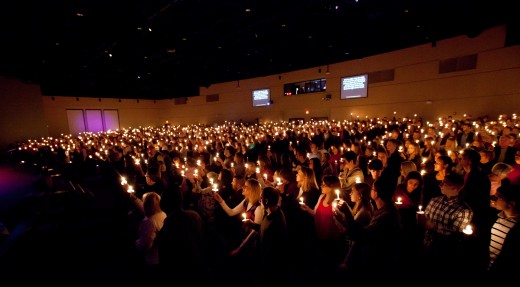
Finding what fits
For all their similarities, the leadership of Woodcrest Chapel and The Crossing would argue that they’re distinctly different. “The Crossing might look similar, but I think the person they’re trying to reach is different,” Bramstedt says. “We’re not trying to compete for people; we want them to go where they fit in. Our competition is the pillow and the golf course, not other churches.”
Cover isn’t as specific about the people they’re trying to reach as he is about what he wants from them. Membership at The Crossing isn’t easy, he says. It requires taking a six-week course and signing a membership covenant. As a result, only about half of the 3,500 attendees are members.
“We’re not OK with that, and we’re OK with that,” he says. Although he and his staff hope to get people committed and active in the church, he says they don’t want to pressure them or make them feel manipulated. “We don’t want to sell but rather meet people’s needs.”
Cover finds that the challenge for any growing church is getting people connected rather than passively watching the show. Any marketing they do, he says, is really about raising awareness through the events they sponsor. One such sponsorship is Ragtag Cinema and the True/False Film Festival.
“They have a lot of ideas, not all we agree with,” he says. “The festival is a great thing for the arts and culture in Columbia. We want to be people who help make that happen in a good way. What we’re trying to do here is bring people into a full experience with God by teaching the Bible in a way that confronts their assumptions.People like that. People want that.”
Granny’s House, Love Inc. and Fellowship of Christian Athletes are among The Crossing’s local and national partnerships. Missions overseas include an orphanage and schools in Kenya. Cover says the goal is to help those in poverty not only economically but also though relationships and by sharing skills.
Woodcrest Chapel supports nonprofit organizations in the community and worldwide as well. The church hosts ministry fairs to encourage congregants to serve in their area of passion. Christmas offerings and other events go toward Invest Inc., which offers food, clothing and education to women and orphans in Malawi.
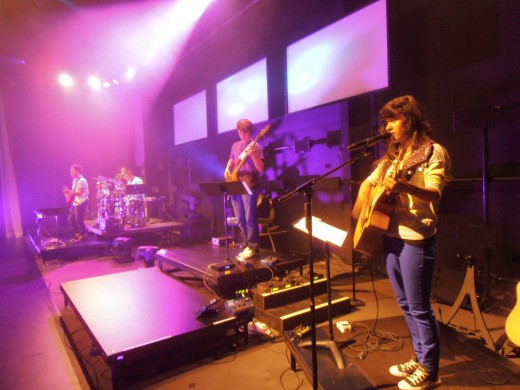
Future plans
When it comes to plans for the future, the two churches have distinctly different visions. Van Waarde, Woodcrest Chapel’s senior pastor, a naturalized citizen from the Netherlands, observed during a recent service that for many Europeans, the church has let them down. Grand European churches are dying.
“We believe that the things we are talking about and the way we talk about them may be relevant for a larger audience,” he writes in a recent email. “We are exploring the various ways that we can do that both through the development of video campuses in communities around mid-Missouri and an expanded use of the Internet.” Along with leveraging technology, the church is investing in leadership development with the hopes of bringing a seminary-level degree program to the area, he says.
At The Crossing, where rapid growth is more recent, the future involves bricks and mortar. The church is undergoing a $12 million construction project that includes a new chapel and expansion of current facilities. Cover says they seek sustained growth by putting systems and structures in place to meet the needs of their growing congregation.
“I hate the idea of a megachurch,” he says. “A stereotype comes to mind of arrogance, of having all the answers. That’s a turn-off to me. We want to be about the transcendence, fear, beauty, comfort, discomfort and glory of God’s presence.”
These are words that resonate with Lu Ann Stewart. She and her family had joined The Crossing after their daughter Marissa, who was in sixth grade at the time, announced it was where she needed to be. “It’s interesting how God directs your path,” she says.
Early one Sunday morning, the police knocked on Stewart’s door with shattering news. Their daughter Jennifer, who had been visiting from New York, had died in a car accident. Although Stewart’s husband was out of town, her in-laws came over to comfort the family. Cover also came by and prayed with them. Later that morning, daughter Kathleen suggested they go to church.
“When I walked into church, I knew that’s where I needed to be,” says Stewart. “I’ve never been so loved by a church family. You see God’s handiwork being done. I can’t wait for Sunday to be here.”


